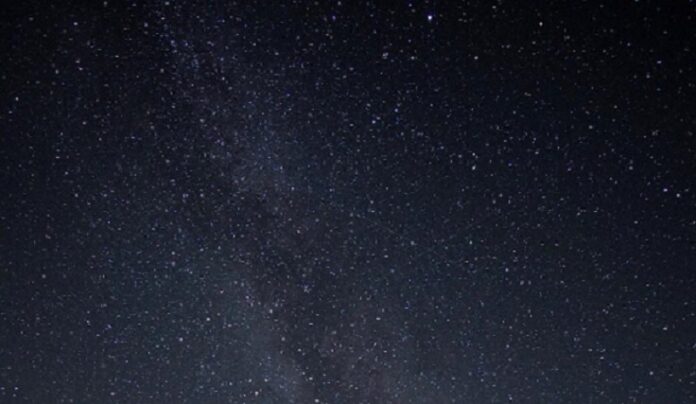Observation of 26 cm 라디오 signals, formed due to hyperfine transition of cosmic hydrogen offer an alternative tool to the study of early 우주. As for neutral epoch of the infant 우주 when no light was emitted, 26 cm lines are perhaps only window. However, these redshifted 라디오 signals emitted by cosmic hydrogen in the early 우주 are extremely feeble and have been elusive so far. In 2018, EDGE experiment reported detection of 26 cm signals but the findings could not be independently confirmed. The main issue was instrument systematic and contamination with the other signals from the sky. The REACH Experiment is to employ unique methodology to overcome the bottleneck. It is hoped that this research group will reliably be able to detect these elusive signals in near future. If successful, REACH Experiment may bring ‘26 cm radio astronomy’ to the forefront in the study of early 우주 and help us much in unravelling the mysteries of early 우주.
When it comes to the study of 초기 우주, name of recently launched 제임스 웹 우주 망원경(JWST) pops up in our mind. JWST, a successor of hugely successful 허블 telescope, is a 공간-based, infrared observatory equipped to capture optical/infrared signals from the early stars and galaxies formed in the 우주 soon after the Big Bang1. 그러나, JWST has some limitation so far as picking up signals from the neutral epoch of 초기 우주 걱정이다.
Table: Epochs in the history of 우주 since the Big Bang

(출처: 우주론의 철학 – 21cm 배경. http://philosophy-of-cosmology.ox.ac.uk/images/21-cm-background.jpg)
Up to 380 k years after the big bang, the 우주 was filled with ionised gas and was fully opaque. Between 380k – 400 million years, the 우주 had become neutral and transparent. The epoch of reionisation started after this phase starting 400 million after the big bang.
During the neutral epoch of early 우주, 때 우주 was filled with neutral gases and was transparent, no optical signal was emitted (hence called dark age). Unionized material does not emit light. This poses a challenge in study of early 우주 of neutral epoch. However, microwave radiation of 21 cm wavelength (corresponding to 1420 MHz) emitted by the cold, neutral cosmic hydrogen during this epoch as a result of hyperfine transition (from parallel spin to more stable anti-parallel spin) offers opportunities to researchers. This 21 cm microwave radiation would be redshifted upon reaching Earth and will be observed at 200MHz to 10 MHz frequencies as radio waves2,3.
21cm 전파 천문학: Observation of 21-centimeter cosmic hydrogen signals offers an alternative approach to the study of early 우주 especially of neutral epoch phase that was devoid of any light emission. This can also inform us about new physics such as distribution of matter over time, dark energy, dark matter, neutrino masses, and inflation2.
However, the 21-cm signals emitted by the cosmic hydrogen during early 우주 phase is elusive. It is expected to be extremely weak (about one hundred thousand times weaker than other radio signals also emanating from the sky). As a result, this approach is still in infancy.
2018년에 연구원들은 원시 우주 수소가 방출하는 78센티미터 신호에 대한 예상과 대체로 일치하는 21MHz의 주파수에서 그러한 무선 신호를 탐지했다고 보고했습니다.4. 그러나 원시 21cm 무선 신호의 탐지는 독립적으로 확인할 수 없었기 때문에 지금까지 실험의 신뢰성을 확립할 수 없었습니다. 주요 문제는 전경 무선 신호의 오염인 것 같습니다.
최신 이정표는 21년 2022월 21일 우주 수소 분석을 위한 전파 실험(REACH) 보고서입니다. REACH는 새로운 실험적 접근 방식을 사용하여 이러한 미약한 우주 전파 신호를 탐지함으로써 XNUMX센티미터 길이의 우주 신호 확인에 대한 새로운 희망을 제시할 것입니다.
우주 수소 분석을 위한 전파 실험(REACH)은 하늘 평균 21cm 실험입니다. 이는 데이터의 잔여 시스템 신호와 관련된 기기가 직면한 문제를 관리하여 관찰을 개선하는 것을 목표로 합니다. 베이지안 통계를 사용하여 전경 및 우주 신호와 함께 계통을 탐지하고 공동으로 설명하는 데 중점을 둡니다. 실험에는 두 개의 서로 다른 안테나, 즉 초광대역 시스템(적색편이 범위 약 7.5~28)과 현장 측정을 기반으로 하는 수신기 교정기가 포함된 동시 관찰이 포함됩니다.
This development is significant given its potential to be one of the best tools (and cost effective too vis-a-vis 공간-based observatories like 제임스 웹) for study of early 우주 as well as possibility of ushering in of new fundamental physics.
***
참조 :
- Prasad U., 2021.James Webb 우주 망원경(JWST): 초기 우주 연구에 전념한 최초의 우주 천문대. 과학적 유럽. 게시일: 6년 2021월 XNUMX일. http://scientificeuropean.co.uk/sciences/space/james-webb-space-telescope-jwst-the-first-space-observatory-dedicated-to-the-study-of-early-universe/
- Pritchard JA 및 Loeb A., 2012. 21세기의 21cm 우주론. 물리학의 진행 상황 보고서 75 086901. 이용 가능 https://iopscience.iop.org/article/10.1088/0034-4885/75/8/086901. arXiv에서 사전 인쇄 가능 https://arxiv.org/abs/1109.6012 pdf 버전 https://arxiv.org/pdf/1109.6012.pdf
- 옥스퍼드 대학교. 우주론의 철학 - 21cm 배경. 이용 가능 http://philosophy-of-cosmology.ox.ac.uk/21cm-background.html
- Bowman, J., Rogers, A., Monsalve, R. et al. 하늘 평균 스펙트럼에서 78MHz를 중심으로 하는 흡수 프로파일. 자연 555, 67–70 (2018). https://doi.org/10.1038/nature25792
- de Lera Acedo, E., de Villiers, DIL, Razavi-Ghods, N. et al. 적색편이 z ≈ 21–7.5에서 28cm 수소 신호를 감지하기 위한 REACH 복사계. 냇 애스트론(2022). https://doi.org/10.1038/s41550-022-01709-9
- Eloy de Lera Acedo 2022. REACH 복사계로 유아 우주의 신비를 밝힙니다. 온라인에서 사용 가능 https://astronomycommunity.nature.com/posts/u
***






































